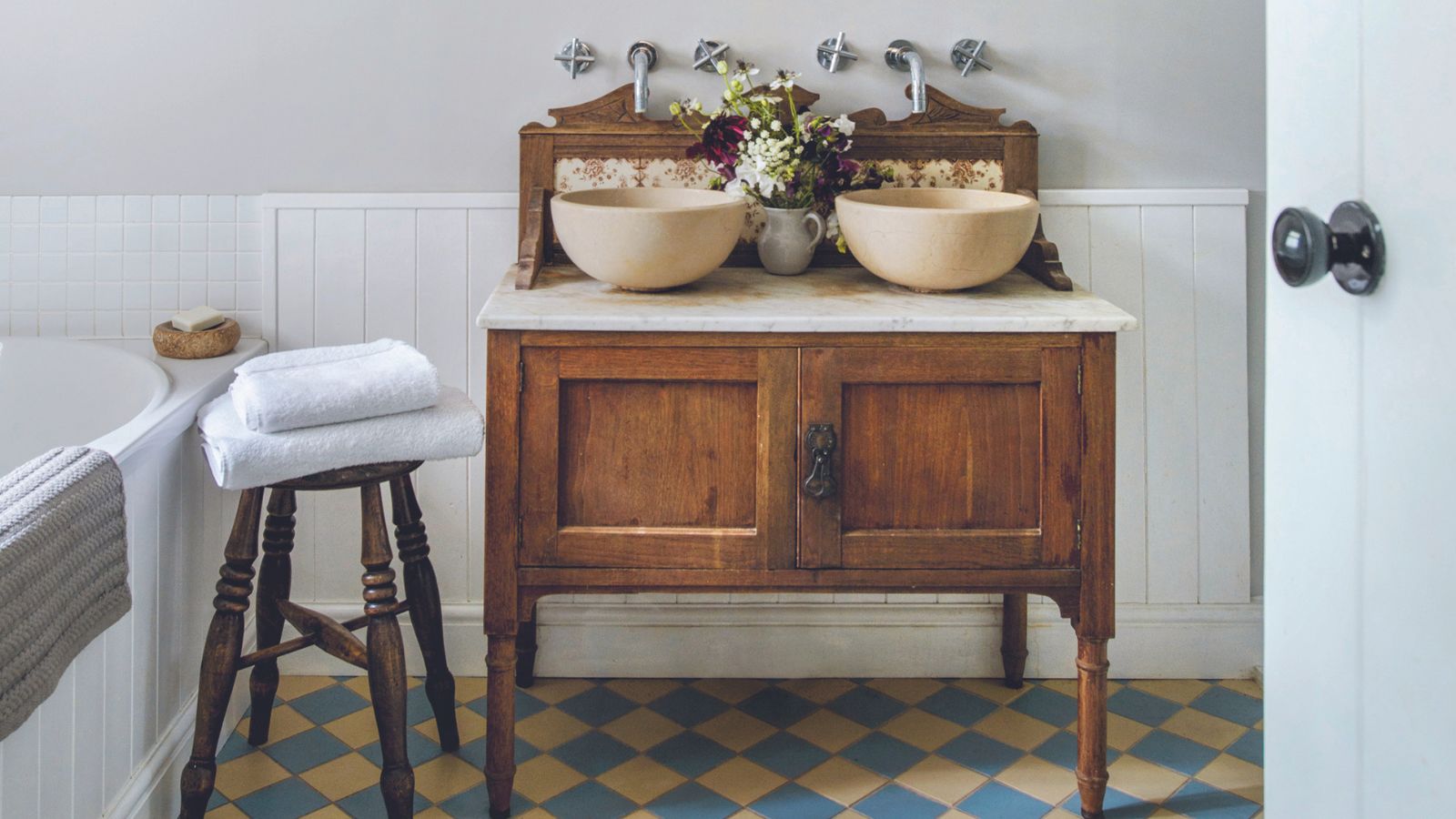
When cleaning sinks around our homes, we might not think to spend too much time on them – let alone the faucets above them.
While a quick wipe-over is a good place to start when removing hard water stains and toothpaste splashes or cleaning kitchen grease, our faucet heads need a deeper clean than that to help combat all sorts of nasties – from limescale to mold.
Here, professional cleaners and microbiologists have shared their best tips for how to clean a faucet head so you can get a superior clean quickly.
How to clean a faucet head
You wouldn't be alone in assuming that your faucet heads don’t get all that dirty. The water we get from them is clean, after all.
However, there are several reasons why you need to clean your drinking water facets – among them being the risk of contamination from everyday bacteria, mold, limescale, and even rust. All of which have the ability to impact our health, our skin, and the cleanliness of our homes.
1. Start with vinegar
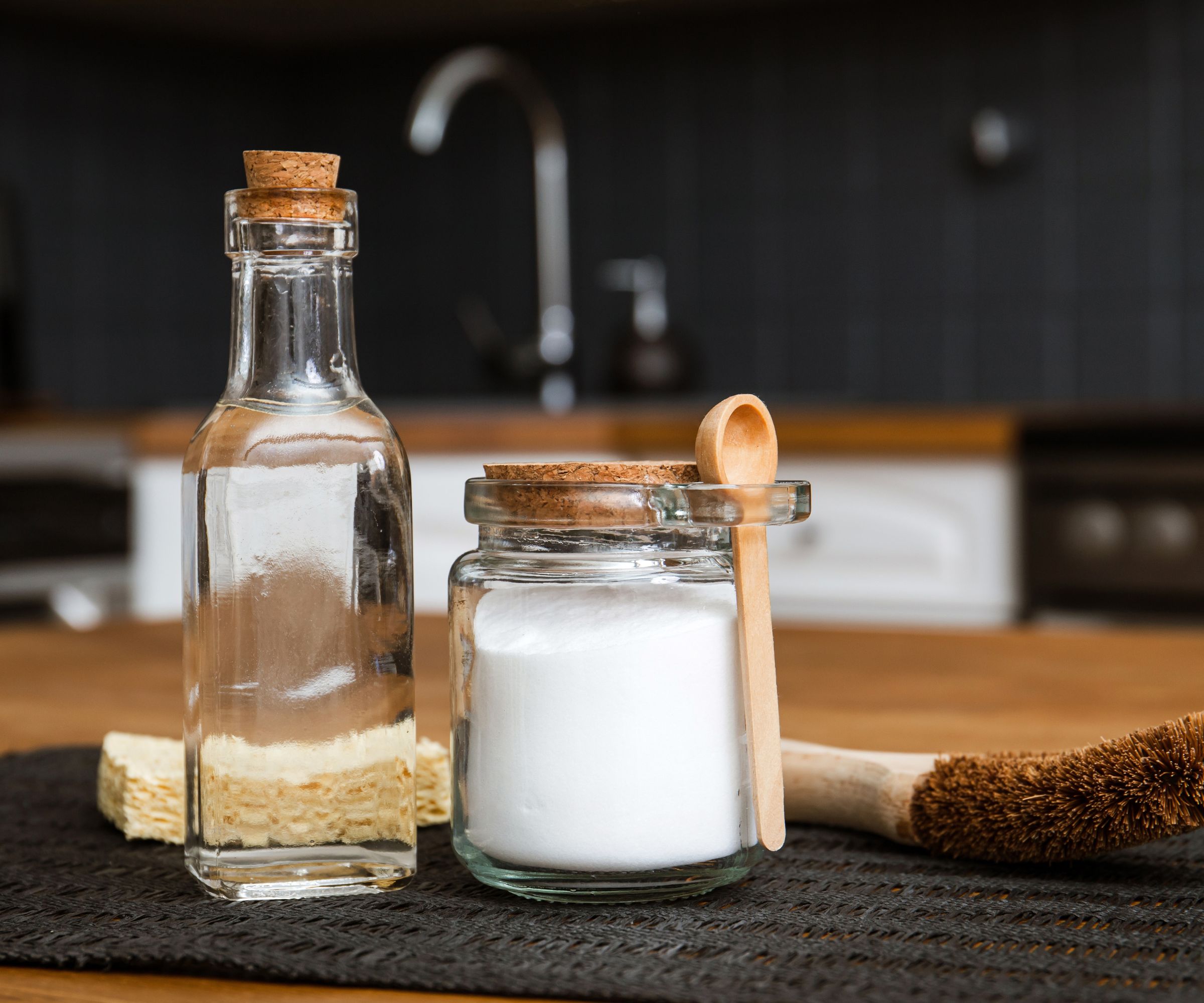
When dealing with mold and limescale, there are few better options than to clean with vinegar, begins Shaun Veran, microbiologist and COO of OURA:
‘Vinegar is an excellent choice because it is highly effective at dissolving mineral deposits and eradicating bacteria from faucet heads,’ he explains. ‘Simply mix equal parts water and white vinegar (with an additional few teaspoons of baking soda for extra fizzing action to break down tough build-up) in a ziplock bag. Submerge the faucet head in the bag and tie it to keep it in place, letting it sit for around 30 minutes.
‘Remove the bag and discard the solution, then scrub the faucet head with a brush to remove any lingering residue. Rinse thoroughly to clean away residue.’
This method is by far the safest for both your home and your health, but, as with any cleaning tips, it comes with its caveats, Shaun continues. ‘While vinegar is an excellent cleaner for removing mineral buildup and killing bacteria, its high acidity can damage or discolor faucets with black, bronze, or gold-colored coatings and finishes. Furthermore, vinegar has a strong odor. It’s not toxic but ensures the area is well-ventilated during cleaning. For those with sensitive skin, wearing gloves is recommended as undiluted vinegar can irritate.’
2. Remove rust with baking soda and lemon
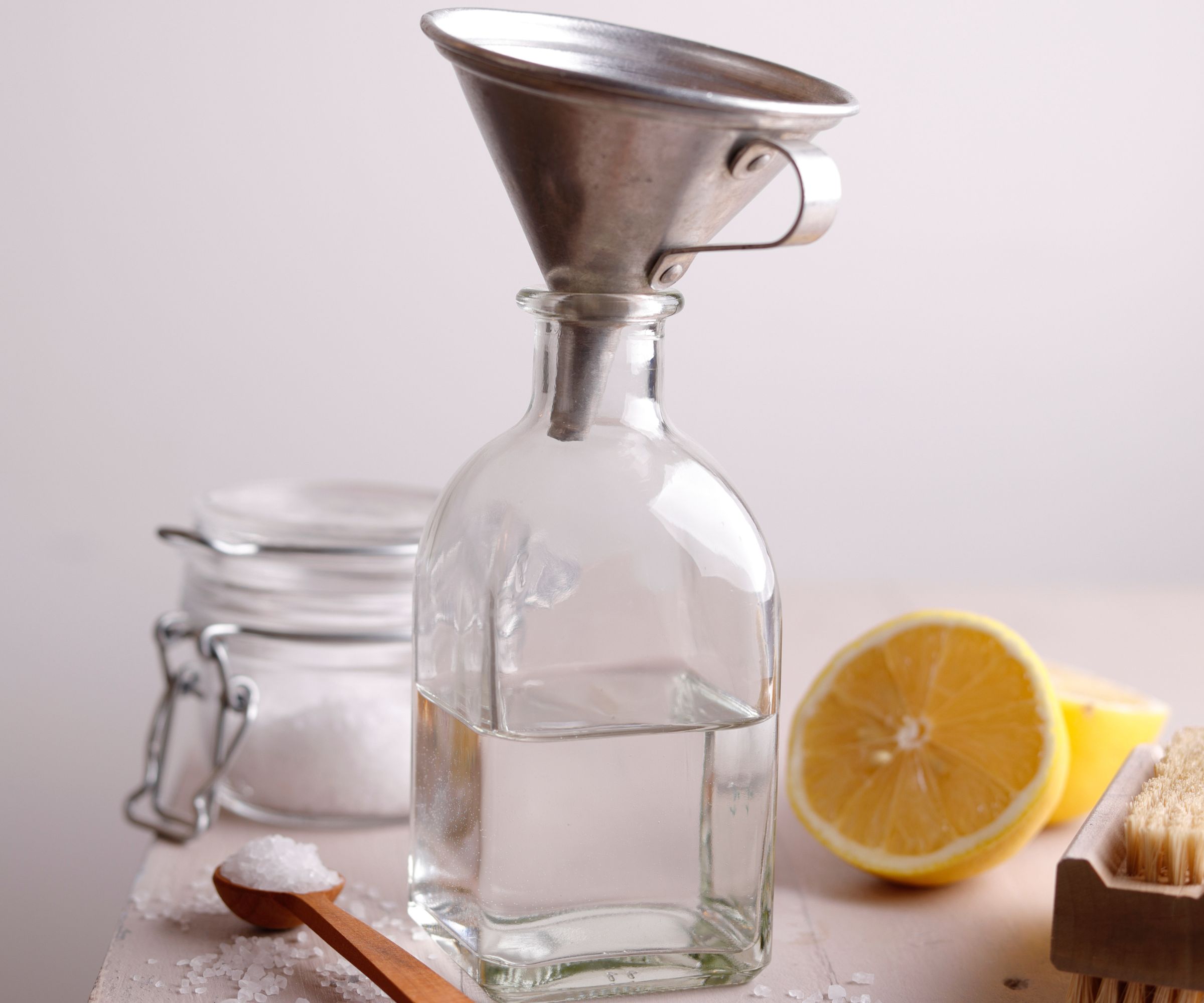
Another green cleaning method for faucet heads is cleaning with baking soda and lemon, adds Yessica Bello, cleaning expert at Bello’s Cleaning. The combination of these two natural ingredients forms a powerful foaming paste that can remove rust and hard water deposits without the need for harsh chemicals that could impact your drinking water, she explains.
‘You simply apply the paste around the faucet head, especially focusing on the areas where the water exits. Leave it there for around 10-15 minutes before gently scrubbing it with a toothbrush. This not only addresses rust but also disinfects as both baking soda and lemon have antibacterial properties.
‘Cleaning with lemon is particularly useful due to its acidic nature, which helps break down limescale without the harshness of chemicals, keeping the faucet’s finish safe while effectively removing build-up.’
3. Clean with CLR
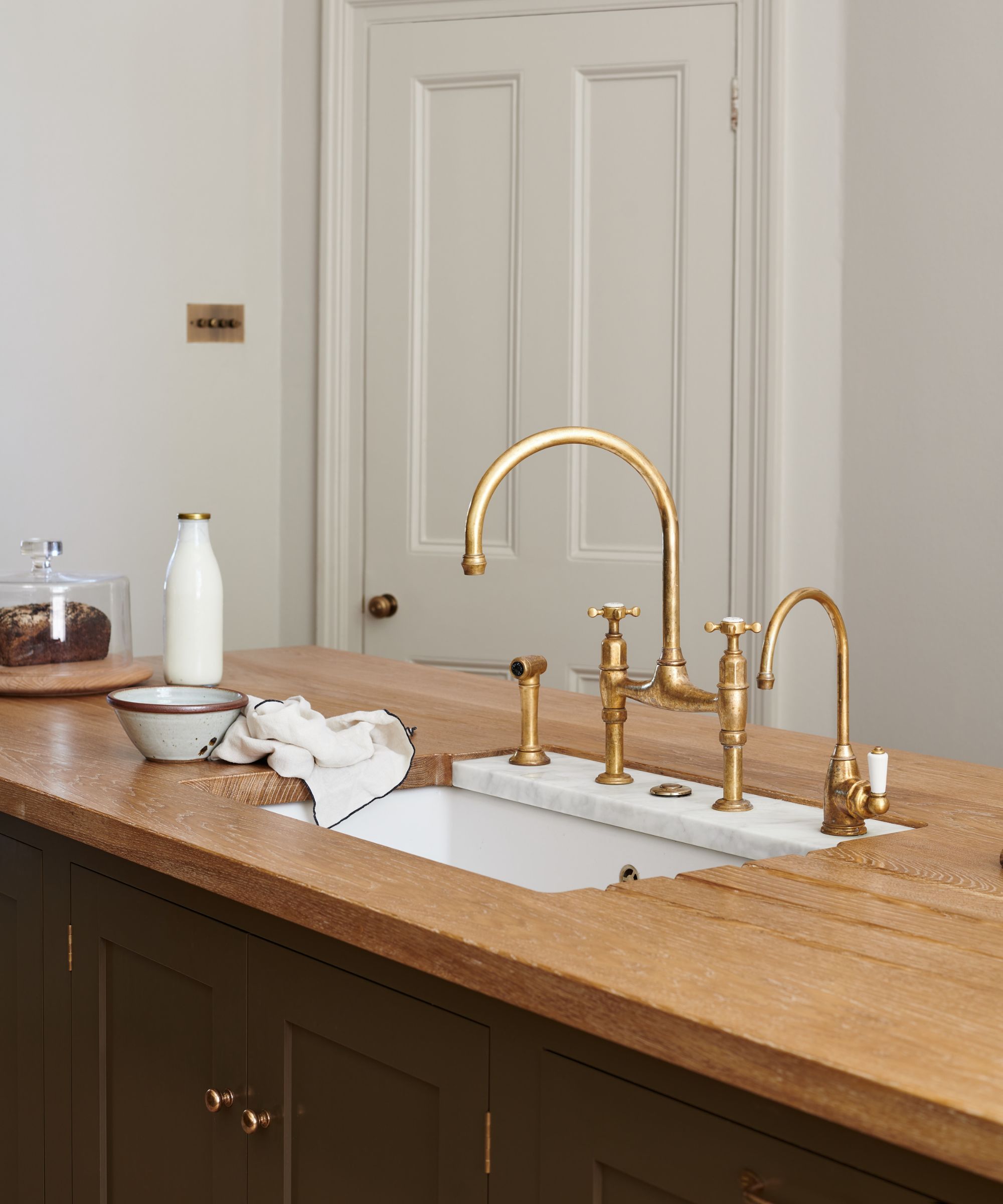
CLR cleaner, or calcium lime rust remover (available at Walmart), helps to break down tough deposits and remove limescale from faucet heads that attract bacteria. ‘By removing these minerals, CLR not only cleans the faucet heads but also removes the habitats that bacteria use to establish themselves. Furthermore, CLR contains ingredients that have been shown to reduce bacterial presence on surfaces, ensuring that the faucets are not only clean from mineral buildup but also from potential pathogenic microorganisms,’ explains Shaun Veran, microbiologist.
He suggests mixing a 50/50 solution of CLR and water in a bowl. Then, ‘submerge the faucet or shower head in the mixture for two to three minutes, gently scrub with a brush, and rinse the faucet head by submerging it in a bowl of clean cold water for another two minutes.’
4. Use an antibacterial product for the facet body
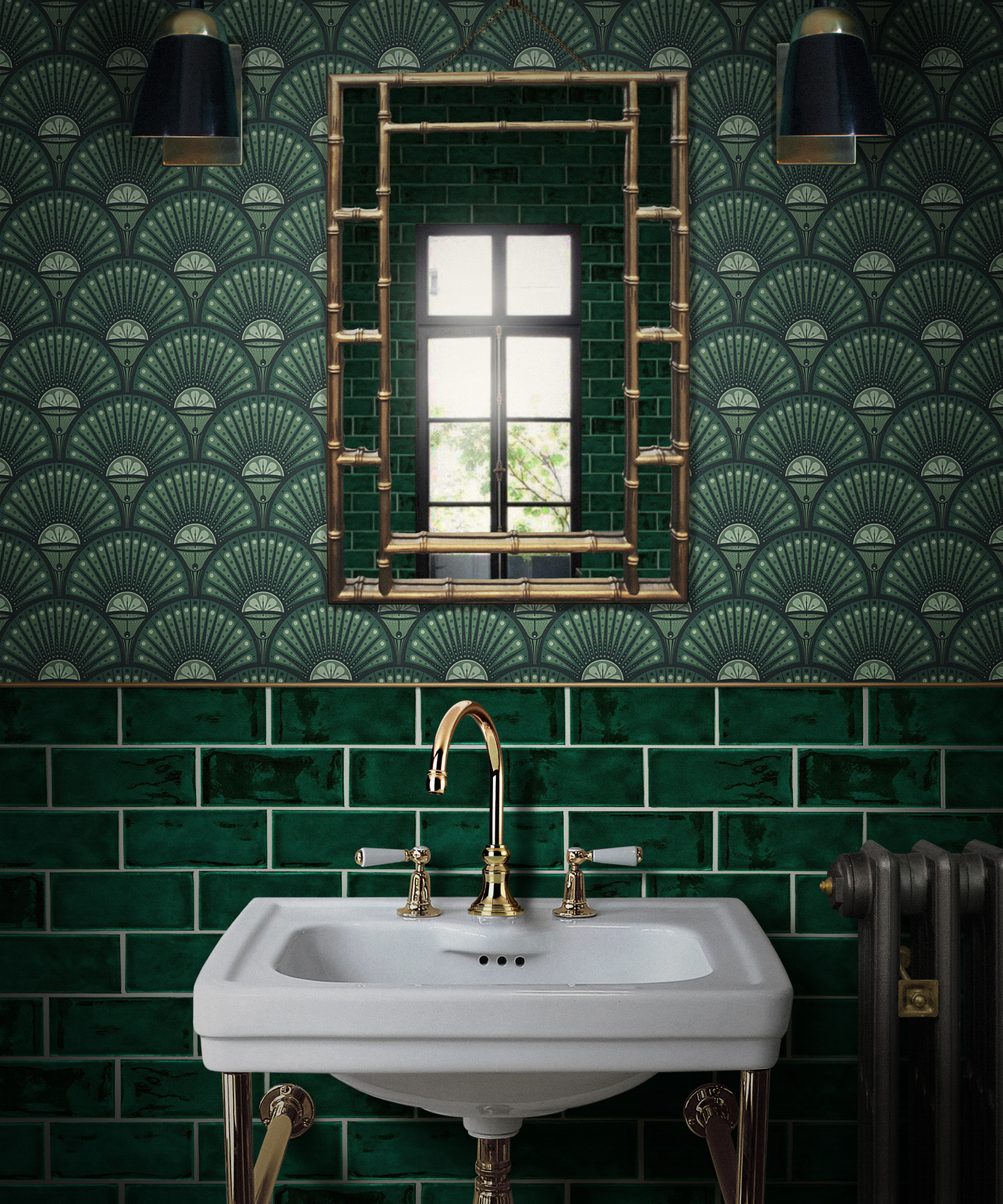
When cleaning a bathroom or cleaning a kitchen, you should always use targeted antibacterial products to help kill germs and microorganisms. Eliana Coca, professional cleaner and owner of E.C. House Cleaning recommends this for the top of the faucet head and body:
‘For disinfecting, especially important in maintaining a hygienic kitchen or bathroom, I use a disinfectant spray or wipes after the mechanical cleaning is done. This helps remove any remaining germs or bacteria, which is crucial in a space where cleanliness is paramount for health.’
Method antibacterial sprays kill up to 99.9% of bacteria and smell fantastic too, making them perfect for brightening your mood and removing lingering vinegar odors.
FAQs
How often should you clean your faucets?
It is generally a good idea to clean your faucets every time you clean your sink – which should be around once per week. This doesn't mean you have to deep clean them every time. A simple wipe-down with a cleaning agent such as vinegar will help to remove any minor buildup or grime. You can then follow up with a deeper clean every month or so to remove any tougher build-up.
Is bleach bad for faucets?
When cleaning faucets in your home, never use bleach. Not only is bleach damaging to the faucet material, but it can leave behind dangerous residue that can make you sick should you drink from it. Instead, stick to safer, natural cleansing products such as white vinegar to kill mold and remove limescale without risking your health and home.
‘Keeping faucet heads clean is crucial not only for aesthetic reasons but also to prevent the potential health risks associated with bacterial biofilms,’ concludes Shaun Veran, microbiologist. ‘These biofilms can harbor a range of microorganisms, some of which may be pathogenic. Regular cleaning interrupts biofilm development, thereby reducing microbial counts and minimizing health risks.’







